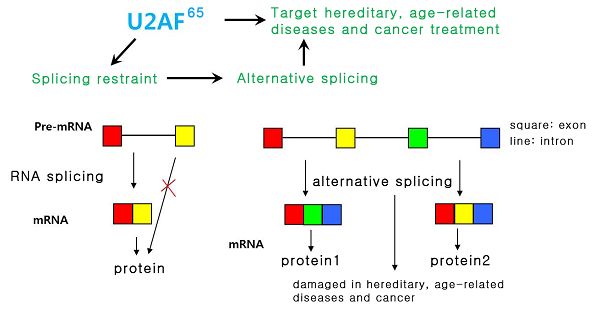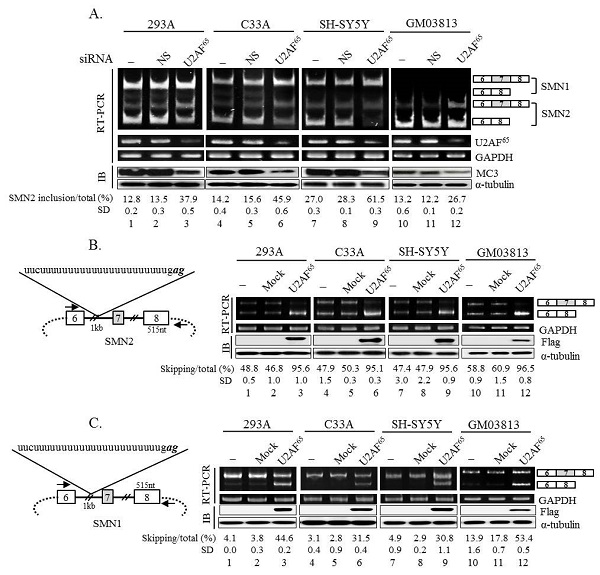Media Center
A multimedia mosaic of moments at GIST
GIST Excellence
[Press Release] Team led by Prof. Haihong Shen has identified a new regulatory mechanism of gene expression
- 엘리스 리
- REG_DATE : 2015.07.31
- HIT : 718
Team led by Prof. Haihong Shen has identified
a new regulatory mechanism of gene expression

GIST Prof. Haihong Shen (L) and Dr. Sunghee Cho (R) School of Life Sciences
The Ministry of Education and the National Research Foundation of Korea stated that Korean researchers have identified a new regulatory mechanism of gene expression and shown the possibility of normalizing the splicing of genes when hereditary diseases, age-related diseases, and cancer occurs.
The research lead by Professor Haihong Shen and Dr. Sunghee Cho (GIST School of Life Sciences) were supported by the Ministry of Education and the National Research Foundation of Korea and the Silver Health Biotechnology Development Project. The paper has been published in the PNAS (Proceedings of the National Academy of Sciences of the United States of America) on July 28 entitled: “Splicing inhibition of U2AF65 leads to alternative exon skipping.”

Figure 1. Diagram shows the disturbance of splicing by U2AF65. U2AF65 Protein regulates alternative splicing by splicing restraint, targeting hereditary, age-related diseases and cancer treatment.

Figure 2. U2AF65 stimulates exon 7 exclusion in both SMN2 and SMN1 pre-mRNA. (A) RT-PCR results of both endogenous SMN1 and SMN2 pre-mRNA are shown from untreated, nonsilencing shRNA-treated and U2AF65-shRNA-treated 293A, C33A, SH-SY5Y, and GM03813 cells. The percentage of exon 7 included RNA versus total RNA and its SD are indicated at the bottom. Immunoblotting analysis of these cells using an anti-U2AF65 (MC3) antibody are shown. (B, Left) The scheme of SMN2 minigene is shown with the intron RNA as a thicker line, whereas the vector sequence as a dot line. The RNA sequence of pseudo 3′ splicesite is shown. (Right) Shown is RT-PCR analysis from cells that express SMN2 minigene with overexpression of Flag-U2AF65 plasmid or control plasmid. Immunoblotting analysis with antiflag antibody is illustrated. (C, Left) SMN1 minigene scheme is shown. (Right) Results of RT-PCR analysis of the SMN1 minigene.
Transcription is a biological procedure in which DNA is transcribed to an RNA molecule. However, only fragments of this RNA are needed for protein synthesis. These fragments are exons that are interrupted by introns. Introns are removed by so-called RNA splicing process. Some exons could be alternatively included or excluded from the final RNA molecule.
In this study, the researchers have found that U2 snRNP auxiliary factor 65 kDa (U2AF65), a general splicing regulator, can significantly promote the exclusion of alternative exons. Strikingly, U2AF65 suppresses flanking intron splicing of alternative exons, and even constitutive intron splicing. The researchers deduce that the stimulatory effects of U2AF65 on alternative exon exclusion are induced by the splicing inhibitory effects of U2AF65.
Prof. Haihong Shen stated that, “RNA splicing is a sophisticated process that makes human proteins, and this research will reveal the details of alternative RNA splicing mechanisms that are not well known. So this research is of great academic significance.”